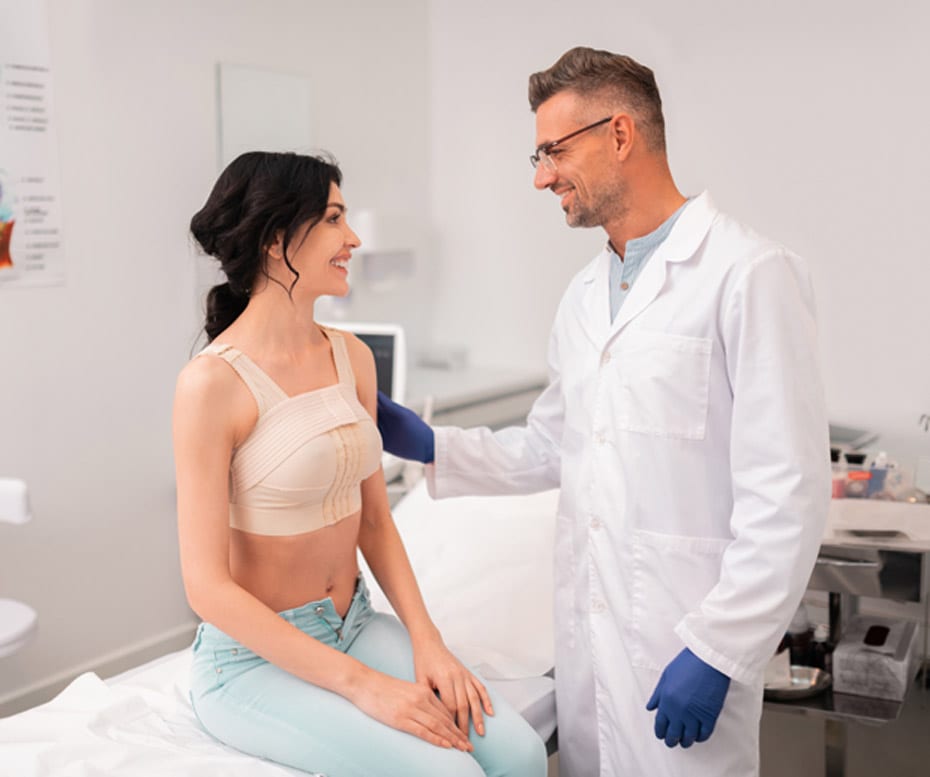- 13320 Riverside Dr., Suite 226, Sherman Oaks, CA 91423
Home » Body Treatments » Transumbilical Breast Augmentation
Transumbilical breast augmentation (TUBA) is a surgical procedure that involves making a small C- or J-shaped incision in the natural creases of the belly to insert breast implants.
Women choose breast augmentation to rebuild their breast(s) as a result of breast-damaging conditions. The surgery can also be performed to increase self-confidence.
The benefits of TUBA, compared to traditional breast augmentation surgery, include:
TUBA is a less common form of breast augmentation surgery because it requires extensive surgeon training and experience.
Other benefits of breast augmentation include:
Patients should speak to their surgeon to find out if TUBA is an appropriate option for them.


The risks of breast augmentation include:
If complications arise, patients may require additional surgery to either remove or replace the implants.
The U.S. Food and Drug Administration (FDA) has cautioned consumers of the possible association between breast implants and increased risk of developing breast implant-associated anaplastic large cell lymphoma (BIA-ALCL), a rare cancer of the immune system. However, association does not prove causation. Further research is necessary to examine the connection between BIA-ALCL and breast implants.
After breast augmentation surgery, some women may experience symptoms of breast implant illness, such as skin rash, fatigue, difficulty concentrating and thinking clearly, memory loss, and joint pain. Removing the breast implants typically helps treat symptoms.
Once the patient has been placed under general anesthesia, the surgeon will make a small C- or J-shaped incision in the natural creases of the patient’s belly button. The surgeon will then guide an endoscope through the incision up to the chest, creating a channel and expanding the breast pocket. He or she will insert an empty saline breast implant through the channel, place it over or under the pectoral muscle, and fill it with saline. The surgeon will then create a second channel to insert the second implant.
The tissues along these channels usually adhere to the patient’s body and don’t leave any visible traces after healing. However, in rare cases, patients may see tracks.
Only saline implants may be inserted during TUBA, since silicone gel implants are prefilled and require larger incisions.
For a few weeks after surgery, patients may experience soreness, swelling, and bruising. Patients will be advised to wear a compression bandage or sports bra to help keep the breast implants in place.
It’s important to contact the surgeon right away if patients experience the following symptoms: